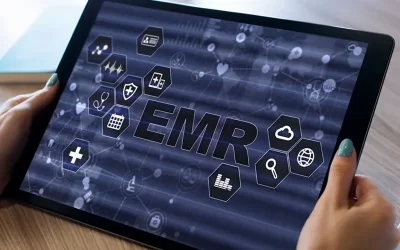As a complete record of a patient’s clinical data and medical information documented by a physician, nurse, lab technician or any other member of a patient’s medical team, a medical chart is a valuable clinical and legal document. It contains records of every medical event including diseases, injuries, growth landmarks and so on. Medical chart reviews are a major step in the lifecycle of a personal injury, workers’ compensation, and medical malpractice lawsuit. These electronic health record and paper chart reviews help determine the legitimacy of the claim and the extent of injury or illness. For clinicians in the care team, the medical record provides a clear view of everything that has occurred previously to the patient, which is crucial to help diagnose current disease states.
Need assistance with medical chart review?
Call 1-800-670-2809 right away and learn more about our medical record review services.
There are different types of chart reviews, and professionals performing such reviews have to be trained and experienced in the same.
- Chart review for medical necessity determinations: Health insurers and healthcare organizations utilize this type of health care review to keep costs down and determine the aptness of care. Often carried out as part of a utilization management program, the most common types of reviews for determining medical necessity are pre-authorizations and concurrent hospitalization review. Requests for non-urgent services must be submitted for authorization before they actually take place. Typically, requests for services that are not covered under a member’s plan and those that are not straightforward are usually reviewed by a qualified physician. Concurrent reviews that are performed during the patient’s hospitalization aim to determine the expected length of stay, decide whether ongoing hospitalization is medically necessary, and to ensure that the appropriate level of care is being used. Insurers may use a medical chart review company to do the bulk of their chart reviews.Hospitals usually entrust the job to one or more physicians. The difference between the reviews done by insurance companies and hospitals is that the reviews performed by the latter don’t directly affect payment for services. They are mainly used to prevent denials of payment by anticipating the insurer’s determinations.
- Electronic medical records review for legal purposes:: In medico-legal cases that involve medical diagnoses and treatment, judges and juries require information from an expert whether the patient care provided was appropriate, whether there was medical negligence or a compromise in medical standards. Typically, these reviews are carried out by an expert medical review team hired by the plaintiff or defense lawyer. The team reviews all the relevant medical records and other documentation and prepares a statement about the medical care provided.
- Chart review for workers’ compensation and disability claims: Workers injured on the job have to be evaluated and the claim approved by the insurance company. Chart review in this case is meant to provide a medical opinion regarding the worker’s injury and how it restricts him/her from carrying out their customary duties. While employees with on the job injuries are treated by their own doctors, it is the insurer that decides whether their claim is valid or not. The insurance company may not choose to have a physician if the claim is a straightforward one. Expensive claims and those that involve disagreements/disputes are usually evaluated by a physician who is otherwise uninvolved in the injured worker’s care. The reviewing physician or medical review team has to provide an opinion regarding various aspects of the injury and its impact on the worker’s duration of disability, and ability to return to work. The causality of the claimant’s injury is also to be clearly stated. Apart from chart reviews, for disability claim determination insurers may also use an IME or Independent Medical Exam.
- Chart review for clinical documentation and coding: Such reviews are done concurrently with a hospitalization to facilitate corrections in the documentation before a claim is filed with the insurer. Clinical documentation improvement (CDI) reviews require professionals with a nursing background and they have to work closely with a coding team for the best results. Many hospitals involve physicians or vendors offering CDI or physician advising services to review complex cases and to assist with communication with treating providers.
- Chart review for insurance underwriting: Insurance companies need to determine how long an individual is expected to live and what medical problems pose the risk of death. This will help calculate insurance premiums.
- Medical research related chart review: Medical records can be reviewed to extract data for research projects.
- Review of the medical chart for quality management and oversight: Chart review is an important process in hospitals/healthcare systems to gather data before making changes to processes or policies related to quality improvement projects.
Medical chart reviews are carried out to obtain an unbiased evaluation of a medical case. These have to be done by professionals with the required expertise and training. While serving as a record of the care provided, a clear review and summary of the medical chart ensures efficient litigation support and valuable medical insight.
Let us help you with customized medical review solutions!
Contact us at 1-800-670-2809!




